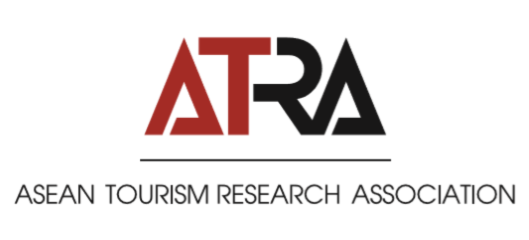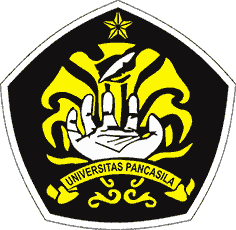TOURIST MOVEMENT PATTERNS IN THE MAMMINASATA REGION
Movement Patterns, Tourism Travel, Mamminasata
DOI:
https://doi.org/10.35814/tourism.v11i2.6013Abstract
The purpose of this paper was to identify the pattern of tourist movement and spatial distribution of tourist routes in the Mamminasata Region and its pull factors. In this context, pull factors influence the formation of travel routes to the Mamminasata Region. A total of 100 respondents as domestic tourists were willing to participate in filling out questionnaires found at tourist attractions and at hotels as the starting point for travel. Movement patterns carried out by tourists in the Mamminasata Region resulted in four movement routes including; First, the Fort Rotterdam-Maros Fort Area which forms a Single Point pattern with a Travel Duration of 1 day. The starting point was at the hotel around Fort Rotterdam, Makassar City then moves to Maros destination. Second, Losari Beach Tourism Area-Maros-Gowa-Takalar. which forms a Base Site pattern with a travel duration of 3 days and 2 nights. The movement pattern on this route resembles a ray spread with one centre point, Makassar City. Integrated area-based governance was needed in the Maminasata area through the establishment of the Mamminasata Tourism System. Thus, tourism policy can unravel the problem of regional equity as the vision of Mammiansata development which creates a national growth centre.
References
Ali, E. (n.d.). Geographic Information System (GIS): Definition, Development, Applications & Components.
Alvarado-Sizzo, I. (2023). Spatial representations, heritage and territorial-synecdoche in contemporary tourism. Tourism Geographies, 25(2–3). https://doi.org/10.1080/14616688.2021.1905708
Azman, N. A. N. M. N., Abd Rahman, N. H., Md Sawari, S. S., Abas, S. A., & Latif, S. A. A. (2021). The tourists’ spatial behaviour and tourist movement pattern in Muar Johor. Planning Malaysia, 19(16). https://doi.org/10.21837/PM.V19I16.970
Azman, N. A. N. M. N., Rahman, N. H. A., Sawari, S. S. M., Abas, S. A., & Latif, S. A. A. (2022). Characteristic of Tourist Movement Pattern in Muar Royal Town, Johor. Ecology, Environment and Conservation. https://doi.org/10.53550/eec.2022.v28i01.009
Campos, A. C., Mendes, J., Valle, P. O. do, & Scott, N. (2017). Co-creating animal-based tourist experiences: Attention, involvement and memorability. Tourism Management, 63. https://doi.org/10.1016/j.tourman.2017.06.001
Cano Guervos, R. A., Frías Jamilena, D. M., Polo Peña, A. I., & Chica Olmo, J. (2020). Influence of Tourist Geographical Context on Customer-Based Destination Brand Equity: An Empirical Analysis. Journal of Travel Research, 59(1). https://doi.org/10.1177/0047287518815979
Cheng, Y., Zhu, K., Zhou, Q., El Archi, Y., Kabil, M., Remenyik, B., & Dávid, L. D. (2023). Tourism Ecological Efficiency and Sustainable Development in the Hanjiang River Basin: A Super-Efficiency Slacks-Based Measure Model Study. Sustainability (Switzerland), 15(7). https://doi.org/10.3390/su15076159
Chung, H. C., Chung, N., & Nam, Y. (2017). A social network analysis of tourist movement patterns in blogs: Korean backpackers in Europe. Sustainability (Switzerland), 9(12). https://doi.org/10.3390/su9122251
Classen, R. J. (1977). An introduction to geographic information systems. Computers and Industrial Engineering, 1(2). https://doi.org/10.1016/0360-8352(77)90015-8
Creswell, J. W. (2020). Penelitian Kualitatif & Desain Riset : Memilih di Antara Lima Pendekatan. In Mycological Research.
Ebejer, J., Smith, A., Stevenson, N., & Maitland, R. (2020). The Tourist Experience of Heritage Urban Spaces: Valletta as a Case Study. Tourism Planning and Development, 17(4). https://doi.org/10.1080/21568316.2019.1683886
Edwards, D., & Griffin, T. (2013). Understanding tourists’ spatial behaviour: GPS tracking as an aid to sustainable destination management. Journal of Sustainable Tourism, 21(4). https://doi.org/10.1080/09669582.2013.776063
Foris, D., Florescu, A., Foris, T., & Barabas, S. (2020). Improving the management of tourist destinations: A new approach to strategic management at the dmo level by integrating lean techniques. Sustainability (Switzerland), 12(23). https://doi.org/10.3390/su122310201
Gu, Q., Zhang, H., Huang, S. (Sam), Zheng, F., & Chen, C. (2021). Tourists’ spatiotemporal behaviors in an emerging wine region: A time-geography perspective. Journal of Destination Marketing and Management, 19. https://doi.org/10.1016/j.jdmm.2020.100513
Guedes, A. S., & Jiménez, M. I. M. (2015). Spatial patterns of cultural tourism in Portugal. Tourism Management Perspectives, 16. https://doi.org/10.1016/j.tmp.2015.07.010
Hall, C. M., & Page, S. J. (2014). The Geography of Tourism and Recreation. Routledge. https://doi.org/10.4324/9780203796092
Invanni, I. (2022). KESIAPAN GEOPARK NASIONAL MAROS PANGKEP MENUJU UNESCO GLOBAL GEOPARK ( STUDI PEMBANDING UNSECO GLOBAL GEOPARK GUNUNG SEWU). Jurnal Environmental Science, 4(2). https://doi.org/10.35580/jes.v4i2.32478
Jones, T. (2012). A life cycle analysis of nature-based tourism policy in Japan. Contemporary Japan, 24(2). https://doi.org/10.1515/cj-2012-0009
Kurniadi, D., Mulyani, A., Septiana, Y., & Akbar, G. G. (2019). Geographic information system for mapping public service location. Journal of Physics: Conference Series, 1402(2). https://doi.org/10.1088/1742-6596/1402/2/022073
Lau, G., & McKercher, B. (2006). Understanding Tourist Movement Patterns in a Destination: A GIS Approach. Tourism and Hospitality Research, 7(1), 39–49. https://doi.org/10.1057/palgrave.thr.6050027
Leiper, N. (1990). Tourist attraction systems. Annals of Tourism Research, 17(3). https://doi.org/10.1016/0160-7383(90)90004-B
Lew, A., & McKercher, B. (2006). Modeling tourist movements: A local destination analysis. Annals of Tourism Research, 33(2). https://doi.org/10.1016/j.annals.2005.12.002
Li, X., Meng, F., & Uysal, M. (2008). Spatial pattern of tourist flows among the Asia-Pacific countries: An examination over a decade. Asia Pacific Journal of Tourism Research, 13(3). https://doi.org/10.1080/10941660802280323
Mahmud, A. (2022). Examining Linkage The Relationship of the Beautiful Malino Event as an Effort to Increase the Tourist Visits. Quantitative Economics and Management Studies, 3(4). https://doi.org/10.35877/454ri.qems1023
Nuhung, S. (2016). Karst Maros Pangkep Menuju Geopark Dunia (Tinjauan Dari Aspek Geologi Lingkungan). Jurnal Plano Madani, 5(1).
Orellana, D., Bregt, A. K., Ligtenberg, A., & Wachowicz, M. (2012). Exploring visitor movement patterns in natural recreational areas. Tourism Management, 33(3). https://doi.org/10.1016/j.tourman.2011.07.010
Padhi, S. S., & Pati, R. K. (2017). Quantifying potential tourist behavior in choice of destination using Google Trends. Tourism Management Perspectives, 24. https://doi.org/10.1016/j.tmp.2017.07.001
Pearce, D. G. (1987). Spatial patterns of package tourism in Europe. Annals of Tourism Research, 14(2). https://doi.org/10.1016/0160-7383(87)90084-3
Ramazannejad, Y., Zarghamfard, M., Hajisharifi, A., & Azar, S. (2021). Factors behind Tourists’ Travel Motivation: The Case of the Gilan Region, Iran. Quaestiones Geographicae, 40(4). https://doi.org/10.2478/quageo-2021-0032
Scandiffio, A. (2019). MAPPING SPATIAL QUALITY of SLOW ROUTES with A GIS-BASED METHOD A COMPARATIVE ASSESSMENT of ALTERNATIVE ROUTES. International Archives of the Photogrammetry, Remote Sensing and Spatial Information Sciences - ISPRS Archives, 42(2/W15). https://doi.org/10.5194/isprs-archives-XLII-2-W15-1071-2019
Siryayasa, I. N., Ridwan, M., & Baharuddin, A. (2022). Analysis The Malino Beautiful Festival On Management Strategy Of Tourist Visits In Gowa Regency. PINISI Discretion Review, 5(2). https://doi.org/10.26858/pdr.v5i2.33008
Sthapit, E., Björk, P., & Coudounaris, D. N. (2023). Towards a better understanding of memorable wellness tourism experience. International Journal of Spa and Wellness, 6(1). https://doi.org/10.1080/24721735.2022.2136120
Sugiyono. (2020). Metodologi Penelitian Kualitatif. In Metodologi Penelitian Kualitatif. In Rake Sarasin (Issue March).
Sugiyono, D. (2013). Metode penelitian pendidikan pendekatan kuantitatif, kualitatif dan R&D.
Suhartanto, D., Brien, A., Primiana, I., Wibisono, N., & Triyuni, N. N. (2020). Tourist loyalty in creative tourism: the role of experience quality, value, satisfaction, and motivation. Current Issues in Tourism, 23(7). https://doi.org/10.1080/13683500.2019.1568400
Taufik, T., Hadawiah, H., & Ahdan, A. (2023). IMPLEMENTASI MANAJEMEN KOMUNIKASI DI DINAS KEBUDAYAAN DAN KEPARIWISATAAN DALAM PROGRAM PENGEMBANGAN GEOPARK MAROSPANGKEP MENUJU UNESCO PROVINSI SULAWESI SELATAN. RESPON JURNAL ILMIAH MAHASISWA ILMU KOMUNIKASI, 4(1). https://doi.org/10.33096/respon.v4i1.177
Thomas, C. F. (2020). An Introduction to Geographic Information Systems. In Libraries. https://doi.org/10.1201/b12440-10
Thurnell-Read, T. (2012). Tourism place and space. British Stag Tourism in Poland. Annals of Tourism Research, 39(2). https://doi.org/10.1016/j.annals.2011.09.009
Wiyoso, D., & Pramitasari, D. (2021). Urban tourism space based on bike-sharing tourist in Yogyakarta city. Jurnal Teknosains, 11(1). https://doi.org/10.22146/teknosains.56079
Xiao-Ting, H., & Bi-Hu, W. (2012). Intra-attraction Tourist Spatial-Temporal Behaviour Patterns. Tourism Geographies, 14(4). https://doi.org/10.1080/14616688.2012.647322
Yang, Y. (2012). Agglomeration density and tourism development in China: An empirical research based on dynamic panel data model. Tourism Management, 33(6). https://doi.org/10.1016/j.tourman.2011.12.018
Yanuar, M. A., Dewi, R. S., Handayani, W., & Yuwanti, S. (2023). Perkembangan Metropolitan Mamminasata: tinjauan kesenjangan aspek sosial-ekonomi dan tata kelola wilayah. Region : Jurnal Pembangunan Wilayah Dan Perencanaan Partisipatif, 18(1). https://doi.org/10.20961/region.v18i1.60006























